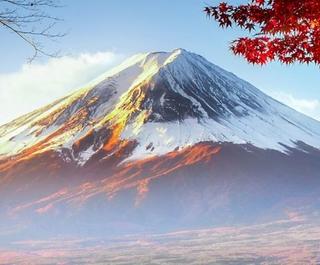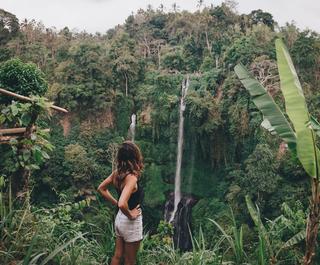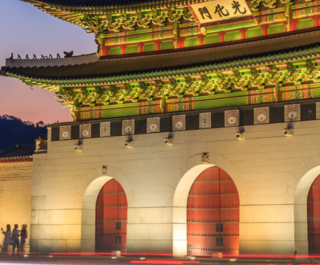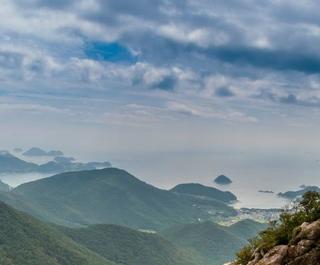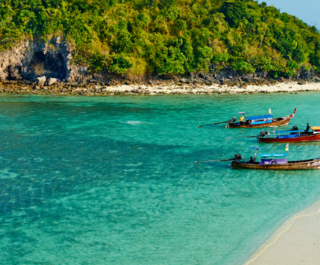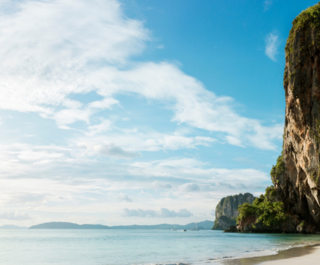
5 May 2022
Read Time: 8.8 mins
Shinto shrines are so integral to Japanese culture that no trip would be complete without visiting at least one.
There are two main religions that shaped Japanese culture – Shintoism and Buddhism. While Shintoism is the country’s traditional religion, Buddhism entered in the sixth century and over time became widely adopted, merging with Shintoism until the two became entwined.
Japan’s 100,000 or so Shinto shrines are places of worship where the kami (Shinto gods) live and are architectural masterpieces. Locals and tourists alike visit these shrines to pay respects to the kami and pray for good fortune.
Here are 20 of the best shrines that are well worth a visit.
1. Fushimi Inari Shrine
Famed for its thousands of torii gates, Fushimi Inari Shrine (c. 711) is the head of the Inari Shrines – the largest shrine network in Japan. At its entrance stands a giant torii gate, donated in 1589. Beyond the torii lies the shrine’s main hall or Honden where visitors can pay their respects to Inari, the kami of rice. Then, it’s time to meander along the tunnel of vermillion torii gates, a pilgrimage route dotted with small statues and shrines. The full scenic hike up Mt Inari takes two to three hours and leads to a stunning view of Kyoto. Reward yourself at a tea house or break up the hike with an authentic meal at some local restaurants along the way.
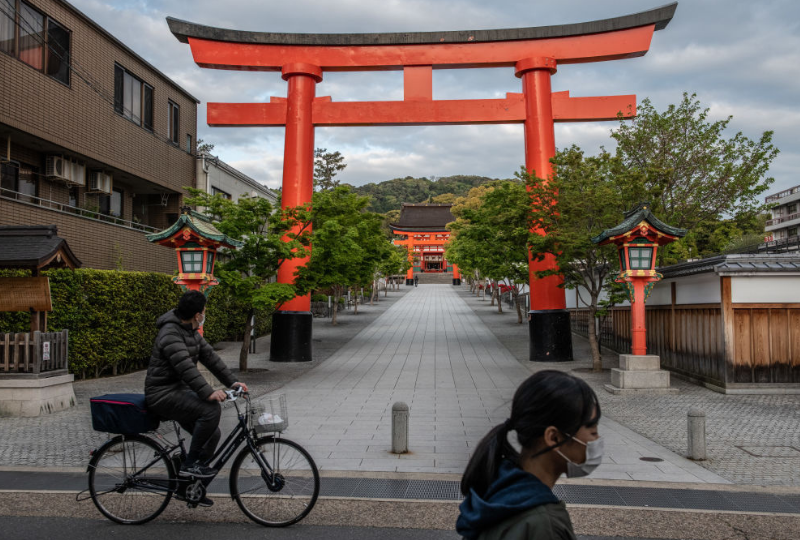 The torii (gateway) to Fushimi Inari-taisha shrine
The torii (gateway) to Fushimi Inari-taisha shrine2. Kumano Nachi Taisha
Kumano Nachi Taisha is a perfect example of the fusion between Shintoism and Buddhism in Japan. One of the primary destinations of the Kumano Kodo pilgrimage routes, you can access this shrine through a variety of trails ranging from the 600m child-friendly Daimon-zaka to multi-day treks. The shrine itself sits next to the Buddhist temple Sigantoji and its iconic three-storey pagoda, backdropped by Japan’s tallest waterfall and the mystical Mt Nachi of the Ki mountains.
3. Ise Jingu (Ise Grand Shrine)
The Ise Grand Shrine is considered one of the most historically significantly sites in Japan. The Inner Shrine Naiku was founded over 2,000 years ago and is believed to enshrine the sacred mirror of the emperor. The Outer Shrine Geku (c. 600) is a shrine dedicated to Toyo’uke-no-Omikami, the Goddess of food, clothing and shelter. The sacred world of the Ise Jingo is separated from the profane world outside by the Ujibashi Bridge. This bridge, along with the wooden shrines of Jingu, is rebuilt every 20 years as a part of a sacred tradition called Shikinen Sengu. Visit the Shoha Art Museum, the nearby Sarutahiki Shrine and a collection of traditional merchant houses in Kawasaki Kaiwai for local crafts and delicacies.
4. Yasukuni Shrine
Yasukuni Shrine was founded in 1869 to honour those who died fighting in the Boshin War which enabled the Meiji Emperor’s return to power. It has since been expanded to enshrine over 2.5 million souls who died fighting for the emperor – including 14 Class-A war criminals. Ever since, this shrine is highly controversial and has been boycotted by the emperor and his son. Features of the Yasukuni shrine include 22-metre tall metal torii gates (the Daicihi Torii), the Sanshuden reception hall, an open-air Noh stage and the Yushukan War Memorial Museum.
5. Meiji Shrine
Meiji Jingu was founded in 1920 as a dedication to the spirits of Emperor Meiji and Empress Shoken. Hidden between two of Tokyo’s busiest districts, it’s separated from the buzz of the city by massive wooden torii gates. Beyond these gates lies peaceful shrine grounds, shrouded in lush greenery that makes you feel transported. Within the shrine, you can pay your respects at the main hall, write a wish on an ema and visit a 400-year-old well used personally by the emperor and empress.
6. Itsukushima Shrine
Famed for its floating torii gates, the Itsukushima Shrine was built in 1168 on a small inlet along the coastline. The massive torii gates appear to float on the water during high tide, an intentional design choice to avoid disturbing the spirits on the island. The shrine is illuminated after sunset until 11pm, making it a beautiful scene for a moonlit stroll. Wooden paths allow you to explore the shrine, torii gates and sea on foot. Alternatively, enjoy a relaxing cruise around the bay and through the torii gate.
7. Nezu Shrine
Nezu Shrine is one of the oldest temples in Tokyo with a long history. According to legend, the structure was originally built in Sendagi in the first century and later moved to Nezu in 1705. The shrine itself is a beautiful combination of traditional Japanese architecture, a still water pond full of carp and a tunnel of red torii gates surrounded by lush greenery. The site is especially photogenic in April, with over one and a half acres of blooming azaleas and the Bunkyo Azalea Festival.
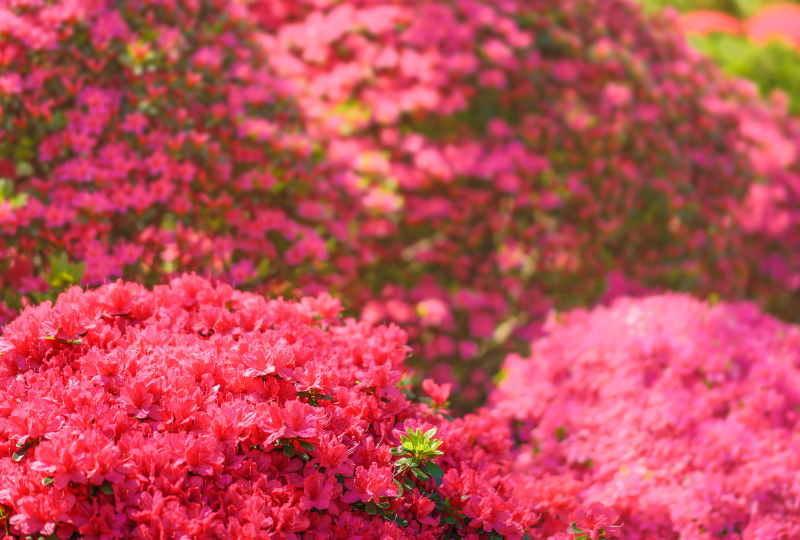 Azalea flowers of fuchsia colors in the garden of Nezu shrine
Azalea flowers of fuchsia colors in the garden of Nezu shrine8. Kushida Shrine
Built in 757 and 943 for three Japanese Shinto gods, Kushida Shrine is Fukuoka’s most historically significant shrine. It is situated in Hakata, the port for trade and diplomacy between Japan, China and Korea at the time. After being burnt down in a battle, the shrine was rebuilt in 1585 as a part of the Hakata restoration. It is most famous for its role in the Hakata Gion Yamakasa festival, where teams race carrying giant floats decorated with historical scenes and weighing approximately one ton each. Look out for its gingko trees, said to be over 1000 years old and showcasing small tablets of the Mongolian invasion.
9. Hokkaido Shrine
Blanketed in snow or framed by some 1,500 cherry blossoms, Hokkaido shrine is beautiful in any season. Dedicated to three gods selected by Emperor Meiji, and the emperor himself, Hokkaido Shrine was first built in 1871 with grounds spanning 18 hectares of natural wilderness. If you’re lucky, you might even get to see a squirrel or a fox. Like many shrines, it was burnt down (in 1974) and restored shortly after in 1978. Make time to relax at the teahouse, write your wish on an ema and purchase an omikuji (a fortune slip).
10. Heian Shrine
Built in honour of Kyoto’s 1100th anniversary as Japan’s capital, Heian Shrine’s Honden enshrines the spirits of the first and last emperors of the city – Emperor Kammu (737 – 806) and Emperor Komei (1831 – 1867). Interestingly, this shrine is somewhat of a scaled-down version of the original Imperial Palace from the Heian Period. At its entrance, you’ll pass through an exact replica of its twin gates, ote-man. Behind the shrine lies its beautiful, Chinese-style garden featuring a large pond, a wooden bridge and a cardinal garden containing plum, cherry, iris, azalea and lilies. It is most popular during spring, with its weeping cherry trees in full bloom.
11. Toshogu Shrine
Toshogu Shrine is an extravagant tribute to the warlord Tokugawa Ieyasu, founder of the Tokugawa Shogunate. Toshogu Shrine contains more than a dozen brilliantly decorated buildings covered in elaborate wooden carvings and gold leaf embellishments. It symbolises the blend of Buddhism and Shintoism, as the temple’s Buddhist features were so entwined that they could not be separated during the Meiji Period. Key sights include its five-storey pagoda, lavish storehouses, famous wood carvings, the ‘crying dragon’ painting, Tokugawa Ieyasu’s tomb and the Nikko Toshogu Museum, displaying the warlord’s armour, swords and personal letters.
12. Udo Shrine
Perched atop and partly encased in a steep cliff along the coastline, Udo Shrine is a seaside shrine with incredible ocean views. Dedicated to the first mythical emperor of Japan who was either born here or visited as a baby, the water dripping from the nearby rocks is said to increase fertility. The shrine itself is brightly painted and features rows of red torii gates, rocky pathways and a hidden cave beneath the main shrine.
13. Sumiyoshi Taisha
Founded in the third century, before Buddhism was widely adopted in Japan, Sumiyoshi Taisha is the head shrine of Sumiyoshi shrines and represents a true Shinto architectural style. Details like straight roofs, forked finials and horizontal billets with its main entrance under the gable distinguish it from many other shrines. Enter the main shrine grounds through the Sorihashi Bridge, a unique high arch over a mirror-like pond and a beautiful photo opportunity. It is dedicated to the kami who protect travellers, fishermen and sailors at sea.
14. Zeniarai Benten Shrine
Zeniarai Benten Shrine is a small shrine popularised by the legend that washing your coins here will double your money. Many tourists and locals make the small hike (25-30 minutes) for this reason. Encased in a cave, you can enter the shrine on a bridge. Place your coins in the wicker basket, kneel respectfully and ladle the natural spring water over your money five times to watch it multiply.
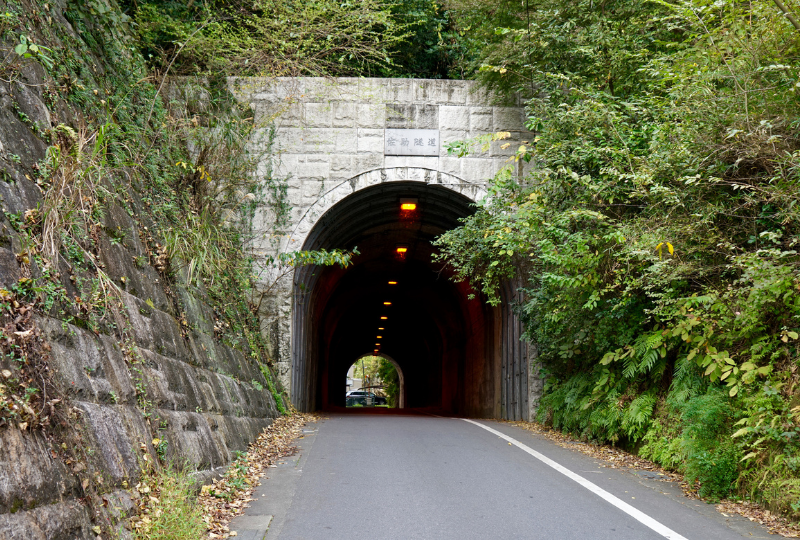 A tunnel leads the way to Zeniarai-Benten-shrine
A tunnel leads the way to Zeniarai-Benten-shrine15. Kumano Hongu Taisha Grand Shrine
Home to the world’s largest torii gates (standing at 33.9 metres tall and 42 metres wide), Kumano Hongu Taisha is one of three Kumano Sanzan and the head shrine of more than 3,000 Kumano shrines. Through fire and floods, the buildings were continuously reconstructed and eventually relocated a short walk away. Designed to blend in with nature, it features two main pavilions enshrining 12 deities, a stage for music, dance and Noh dramas, and beautiful bronze rooftop ornaments. Most choose to approach the traditional way with a two-hour hike through the Nakahechi pilgrimage route, but you can also take the bus. While you’re in the area, soak in one of three nearby hot springs or visit the largest outdoor bath in western Japan.
16. Shimogamo Shrine
Shimogamo Shrine is one of two Kamo shrines built in the sixth and seventh centuries, before Kyoto’s establishment as the capital. Overflowing with nature, the shrine lies in the Tadasu no Mori (a preserved forest with trees up to 600 years old) where the Tokano and Kamo rivers meet. A beautiful juxtaposition of lush greenery, white gravel, mossy streams and vermillion architecture create a scene from a fairy tale. After crossing the arched Taikobashi bridge, the shrine welcomes you with a brilliant two-storeyed gate with rows of lanterns lining the inside. Explore its buildings, wander the shrine grounds and pay your respects at its many smaller shrines before making the short three-kilometre journey to the other Kamo shrine – Kamigamo Jinja.
17. Kamigamo Shrine
The other half of the Kamo shrines, Kamigamo shrine is almost a continuation to Shimogamo Shrine in its scenery, with mossy gardens and bubbling streams. Kamigamo Shrine also features large weeping cherry trees adorning bark armour. Guarding the entrance of the worship hall sit two sand statues with pine needles meticulously placed at the top.
18. Arakura Sengen Shrine
Arakura Sengen Shrine is perhaps Japan’s most iconic photo op. A day-trip from Tokyo, Arakura Sengen Shrine grounds house the famous five-storey Chureito Pagoda which overlooks Mt Fuji and Fujiyoshida City. The scene is made even more photogenic by the season – cherry blossoms in spring, golden leaves of the autumn ‘koyo’ season or the snow-capped Mt Fuji in winter. Arakura Sengen Shrine is historically significant, with stories around the great eruption of Mt Fuji in 807 and from the Warring States Period.
19. Kasuga Taisha Shrine
Kasuga Taisha Shrine was the tutelary shrine of Japan’s most powerful family, the Fujiwara. It was built at the same time as the establishment of Nara as the capital and dedicated to the kami who would protect the city. It’s best known for its thousands of bronze and stone lanterns, as well as its distinctive Kasuga architectural style. The shrine grounds also house the Kasuga Taisha Museum and the sacred Kasuga Primeval Forest.
20. Izumo Taisha
Izumo Taisha Grand Shrine is Japan’s second most important and likely Japan’s oldest shrine. Dedicated to Okuninushi-no-Okami, the kami who built Japan and the deity of good relationships, Izumo Taisha is the shrine where Japan’s eight million deities congregate each year. The Kamiari Festival is held during this period. In ancient times, Izumo Taisha was also Japan’s tallest building at 96 metres. Unfortunately, its pillars have been removed and the wooden structure currently only stands at an impressive 24 metres. With a side worship hall, main hall and fenced off inner sanctuaries, the shrine grounds also contain two buildings called Jukusha which serve as lodgings for all those visiting deities.


